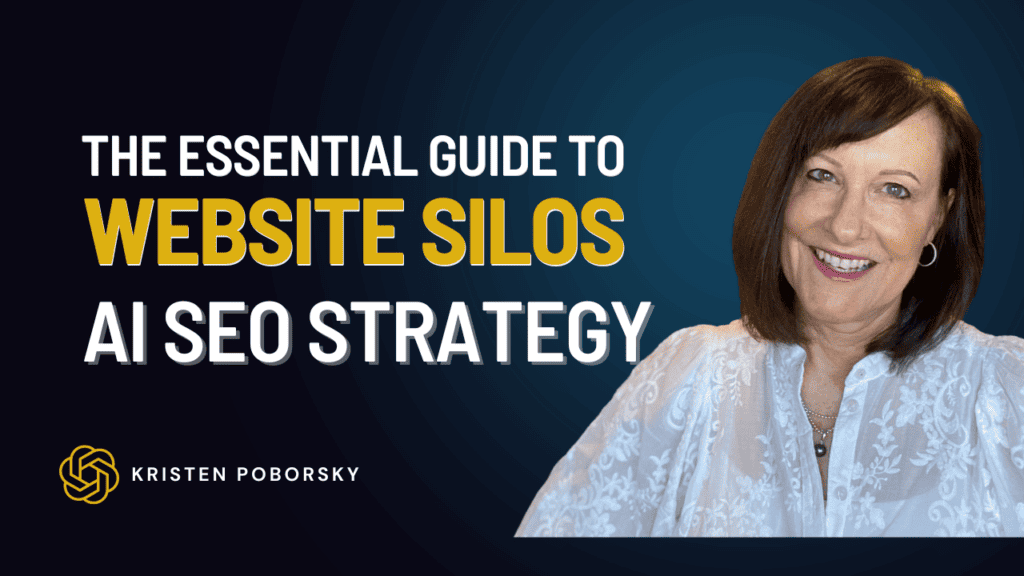Discover how the strategic use of website silo structure, empowered by AI, can revolutionize your website’s SEO and user experience.
Welcome to the insightful world of website silo structure, a pivotal SEO strategy that’s crucial for enhancing your website’s and content’s search engine visibility.
A website silo structure isn’t just about organizing content; it’s about creating a coherent, keyword-focused framework that search engines love. And with AI’s touch, this strategy evolves into a powerhouse for SEO success.
I’m all about building great websites for my clients and driving massive traffic to them.
That’s all great, but if you haven’t thought about how you want to organize your content you’re missing a big opportunity to rank your site higher with the search engines and provide a great experience for your visitors.
Key Elements of a Website Silo
In the context of website silo structure, think of your website as a well-organized library. Each ‘silo’ represents a category of content, meticulously organized and interlinked to enhance both user experience and SEO.
Today it is so easy for you to use AI tools to analyze and optimize your silos for maximum search engine impact.
Understanding What a Website Silo Structure is
At its core, your website silo structure is about strategically organizing your content.
If I could pick one word to describe a website silo that would be organization.
You’ll want to cluster your website’s content around targeted keywords, enhancing the thematic relevance of each silo.
AI-driven tools can make this so easy for your website silo process, ensuring your website silo structure aligns perfectly with current SEO trends.
Benefits of a Well-Organized Website Silo Structure
A robust website silo structure offers numerous benefits for your visitors.
It simplifies navigation, reduces bounce rates, and clarifies your site’s focus on search engines, thereby improving keyword relevancy.
Think organization, better customer experience, and improved SEO rankings when you hear the word website silo. Organization and improved user experience are probably two of the biggest benefits I can think of when creating a website silo.
When you have those two things in order…you’ll get more points from Google because your visitors will naturally stay on your website and consume more of your content.
Getting Started with Website Silo Structure
Simply put, a website silo is about creating strong keyword-related themes on your website to improve the relevancy of your site in the eyes of the search engines.
And the best way to achieve this is by organizing your content
You want to organize your website content around your keywords and make sure you link your content to the page you want to rank for. What you want to do is to make sure that when you plan your site you organize your pages around the page you want to rank for.
Most often you want to make sure you rank highly for your home page so you’ll want links to and from that page from other pages on your site.
To implement an effective website silo structure, you’ll want to grab a piece of paper and begin by categorizing your main content areas.
Start by writing down the categories you have on your website…
This foundational step is crucial for both your visitor experience and SEO. Incorporating
AI in this phase helps in identifying content gaps and optimizing the overall structure for better search engine performance.
Recommended Tool: Google Analytics: Utilize its AI insights to identify pages with low engagement, high bounce rates, or declining traffic.
Recommended Tool: Google Ads Keyword Planner: Useful for identifying high-volume keywords in your niche that you might not be targeting yet.
Recommended Tool: ChatGPT: Useful for taking your keyword ideas and use it to generate a list of topics
Improving Your Visitor Experience with Website Silo Structure
A well-planned website silo structure makes it easier for your visitors to find relevant information, significantly enhancing the user experience.
AI can take this a step further by providing personalized content recommendations, ensuring that each visitor’s journey through your website is engaging and relevant.
Recommended Tool: ChatGPT: Use it to come up with content ideas for your customer journey based on the keyword research you’ve done.
Practical Steps to Build Your Website Silo Structure
Start building your website silo structure with a clear, organized plan.
Utilize tools like spreadsheets and templates to map out your content.
AI tools are invaluable here, offering insights into content performance and guiding your silo structuring efforts.
Recommended Tool: Google Analytics
Advanced Strategies and Tools for Website Silo Structure
Embrace AI for predictive SEO analysis and to stay ahead of evolving trends.
Regularly update your content and refine your website silo structure with AI-driven insights, ensuring your website remains both relevant and authoritative.
Recommended Tool: Google Analytics
Creating a structure and organizing your content helps to:
#1: Give your website visitors a clear path of where to go next on your site, lowering your bounce rate
#2: Gives the search engines have a very clear idea of what your site is about.
#3: Improves your keyword relevancy for the keywords you are targeting.
The bottom line is that Organization Matters
Implementing a website silo structure is a game-changer for your SEO strategy. It’s not just about organizing content; it’s about creating a seamless, intuitive user experience.
I encourage you to apply these strategies and share your success stories.
Search engines are more likely to rank your site higher for your keyword when the content is organized. This is why I love to create resource pages for clients on topics we know their audience is searching for.
Let’s use Infidelity as an topic example from a client of mine who is a Marriage Therapist. Here’s how we walked through the process of building his resource page
#1: We researched and found hot topics for our client who then wrote a series of articles on the subject.
#2: Then we created a resource page on the topic and linked all of the articles to and from that page.
#3: In the eyes of the visitor to the site we did them a big favor by giving them one resource page to find out everything they would need to know about the subject and
#4: In the eyes of the search engines, the client looks like an authority on the subject because his content is neatly organized.
A well-executed website silo structure improves your visitor’s experience
When you group related content you provide a better experience for your visitor.
Doing this makes it easier for them to find a lot of information at their fingertips without having to search or click many times to get at it. By doing this you are more likely to reduce your bounce rate which is the number of visitors that leave your site after only viewing a single page.
The key is to make it easy for people to find what they are looking for.
Make sure you keep the content links related to the category they are nested under and resist cross-linking categories unless it makes sense. Don’t cross-link just to build links.
Be methodical and logical, think about how you can help improve your audience’s experience and you can’t go wrong.







